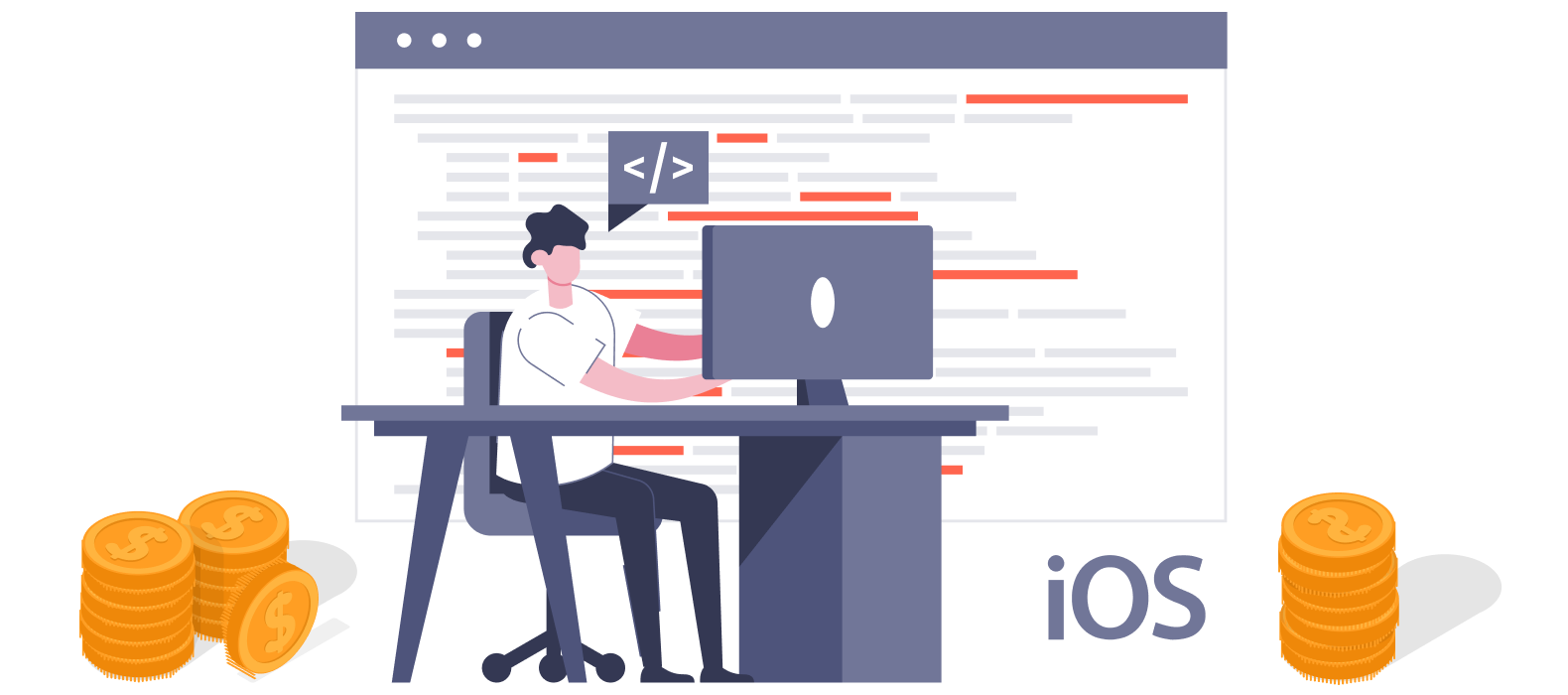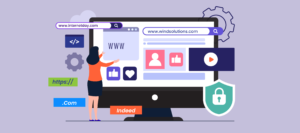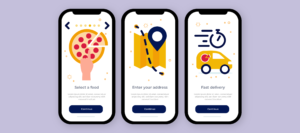How much does it cost to develop an iOS app?
Determining the cost of iOS app development can be a complex task. While a straightforward answer would be around $30,000 – $40,000, it’s important to note that the actual cost depends on various factors.
There are numerous misconceptions surrounding iOS app development costs in the market. Some claim that building iPhone and Android apps costs the same, while others argue for a difference. This lack of clarity often leaves business people unsure about the correct information.
As a result, many app founders face unexpected budget changes during their iOS app development journey. Sometimes, they have to completely re-plan their projects due to miscalculating costs.
Understanding the accurate cost to develop an iOS app is crucial as it allows you to analyze your budget and allocate resources effectively. By doing so, you can maximize your return on investment when hiring iOS app developers or initiating an app development project. We understand the importance of this aspect, which is why we are here to provide you with a comprehensive guide on this topic.
So, Without further delay, let’s begin.
Different iOS App Categories – An Overview with Cost Estimation
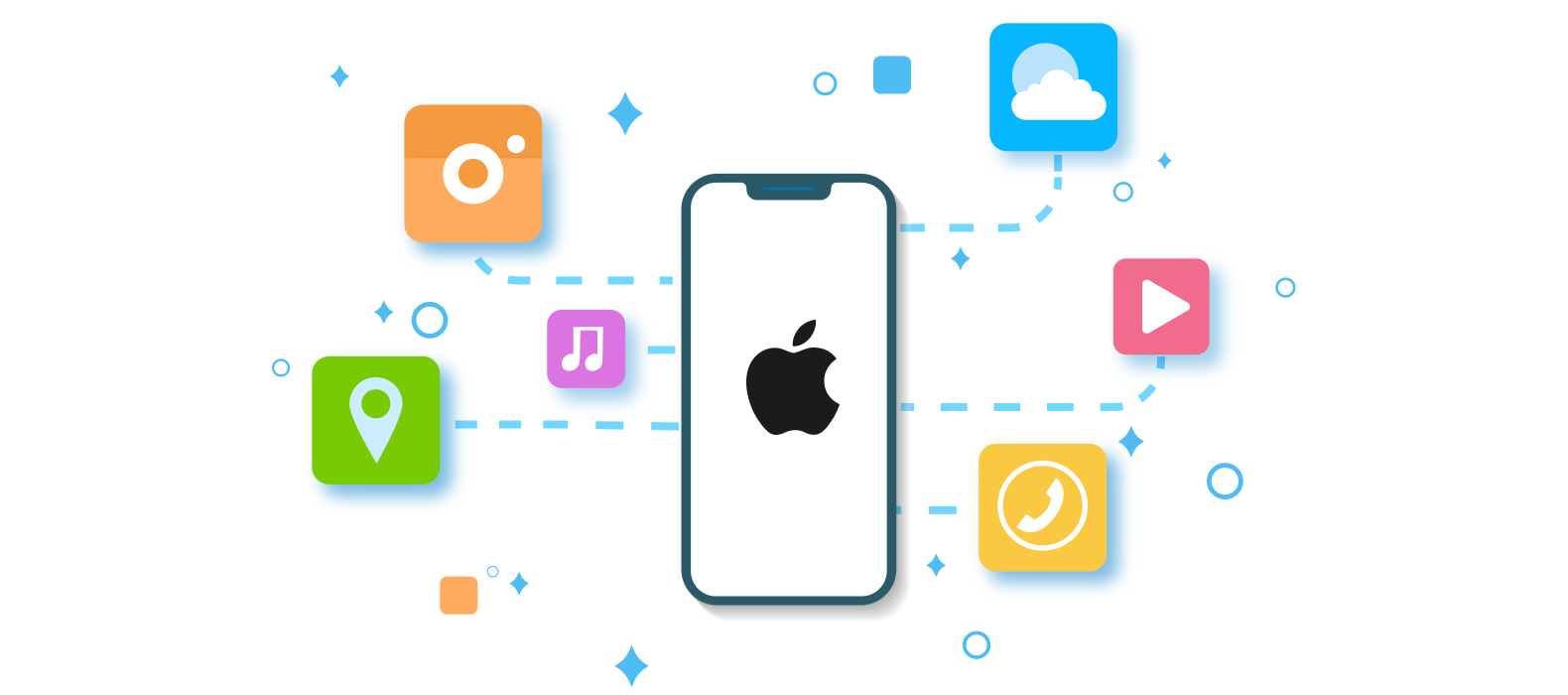
With so many different iOS mobile app kinds available today, these categories heavily influence the cost to develop an iOS app. Each type has its characteristics, people, safety standards, etc. The following is a list of several iOS app categories:
|
iOS app category |
Average Cost |
|
Stand-Alone iOS Apps |
$12,000 to $25,000 |
|
Customized iOS Apps |
$20,000 to $60,000 |
|
Social Networking iOS Apps |
$30,000 to $90,000 |
|
On-Demand iOS Apps |
$50,000 to $100,000 |
|
MCommerce iOS Apps |
$30,000 to $80,000 |
|
Enterprise iOS Apps |
$50,000 to $120,000 |
- Stand-Alone iOS Applications: Stand-alone iOS applications are independent apps that provide specific functionality without relying heavily on backend services or external integrations. Examples include calculator apps, weather apps, note-taking apps, and games. These apps typically don’t require internet connectivity to function.
- Customized iOS Apps: Customized iOS apps are tailored specifically for businesses or organizations to meet their unique needs. They are developed to address a company’s specific requirements, workflows, or processes. Customized iOS apps can automate tasks, improve efficiency, and enhance productivity. Examples include inventory management apps, CRM apps, and project management apps.
- Social Networking iOS Applications: Social networking iOS applications facilitate user communication, interaction, and content sharing. They often include features like user profiles, messaging systems, news feeds, photo sharing, and social connections. Examples include Facebook, Instagram, and Twitter.
- On-Demand iOS Applications: On-demand iOS applications enable users to access products or services instantly. They typically connect users with service providers or vendors and facilitate transactions or bookings. Examples include ride-sharing apps like Uber, food delivery apps like Uber Eats or DoorDash, and home services apps like Handy.
- mCommerce iOS Applications: mCommerce (mobile commerce) iOS applications focus on enabling online transactions, primarily for purchasing products or services through mobile devices. They offer features like product catalogues, secure payment gateways, user reviews, and order tracking. Examples include retail apps like Amazon and eBay and mobile banking apps.
Why Choose iOS App Development over Android
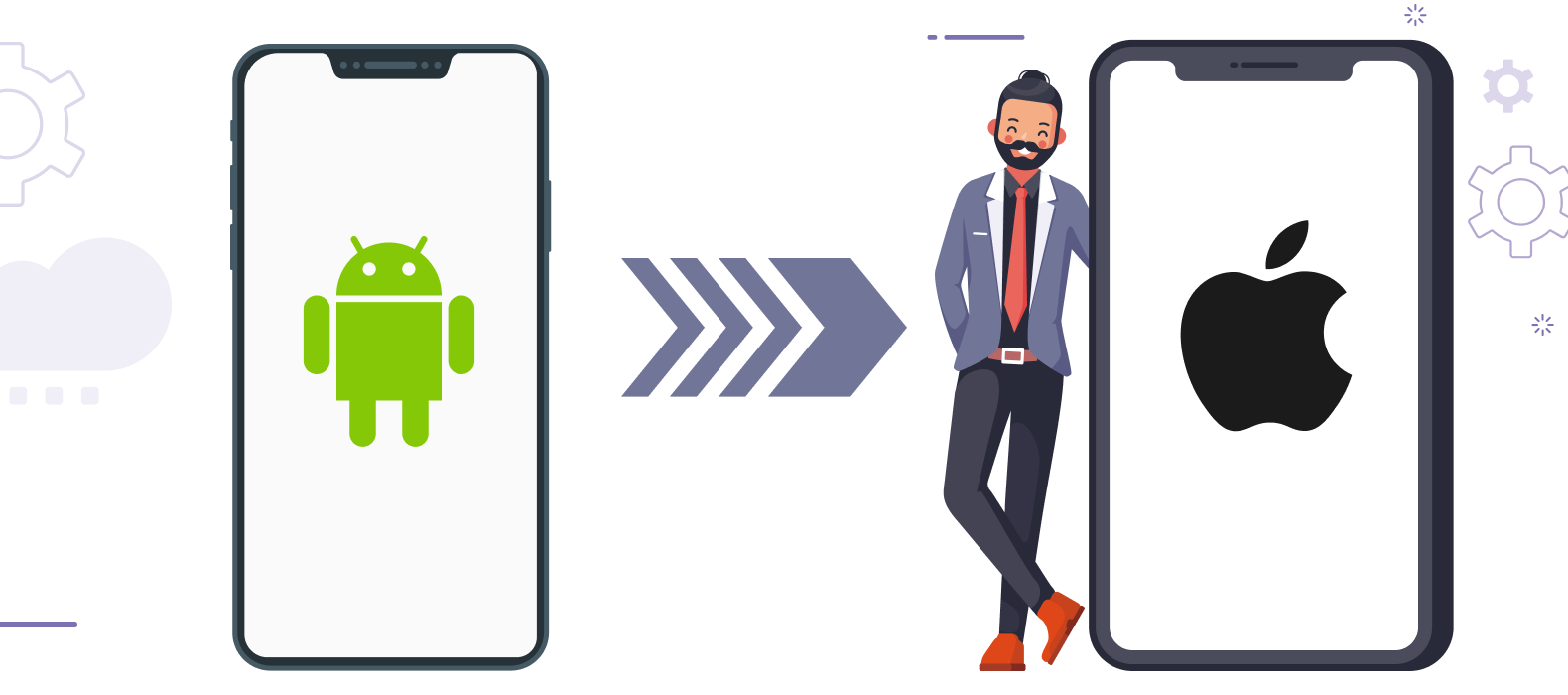
Choosing iOS app development over Android can offer several advantages depending on your specific needs and goals. Here are some reasons why you might consider iOS app development:
- Market Presence: iOS devices, such as iPhones and iPads, have a significant market presence, especially in regions like North America and Europe. If your target audience predominantly uses iOS devices, developing an app for iOS can help you reach a large user base.
- User Engagement and Spending: iOS users tend to be more engaged and willing to spend money on apps. According to various reports, iOS users spend more on in-app purchases and have higher average revenue per user (ARPU) than Android users. This can be advantageous if your app involves monetization through in-app purchases or subscriptions.
- App Store Quality and Curation: The Apple App Store has a rigorous review process and strict quality guidelines, resulting in a curated and generally more consistent app experience for users. This can ensure a higher level of quality control for your app and potentially lead to better user satisfaction.
- Development Simplicity: Developing for iOS can sometimes be more straightforward than for Android due to the limited number of iOS device models and versions. This can result in reduced development and testing efforts, leading to faster time to market for your app.
- Design and User Experience: Apple strongly emphasizes design and user experience. iOS apps often follow strict design guidelines and principles, resulting in a more consistent and aesthetically pleasing user interface. If you prioritize a polished and visually appealing app, iOS might be better.
- Developer Tools and Support: Apple provides a comprehensive set of developer tools, including Xcode and the Swift programming language, which are highly regarded in the development community. Apple also offers developers excellent documentation, resources, and support, facilitating the app development process.
It’s important to note that these advantages may not apply in every situation, and the decision between iOS and Android app development ultimately depends on your specific requirements, target audience, budget, and business goals. Consider conducting market research and analyzing your target user demographics to make an informed decision.
Factors Affecting the iOS App Development Cost
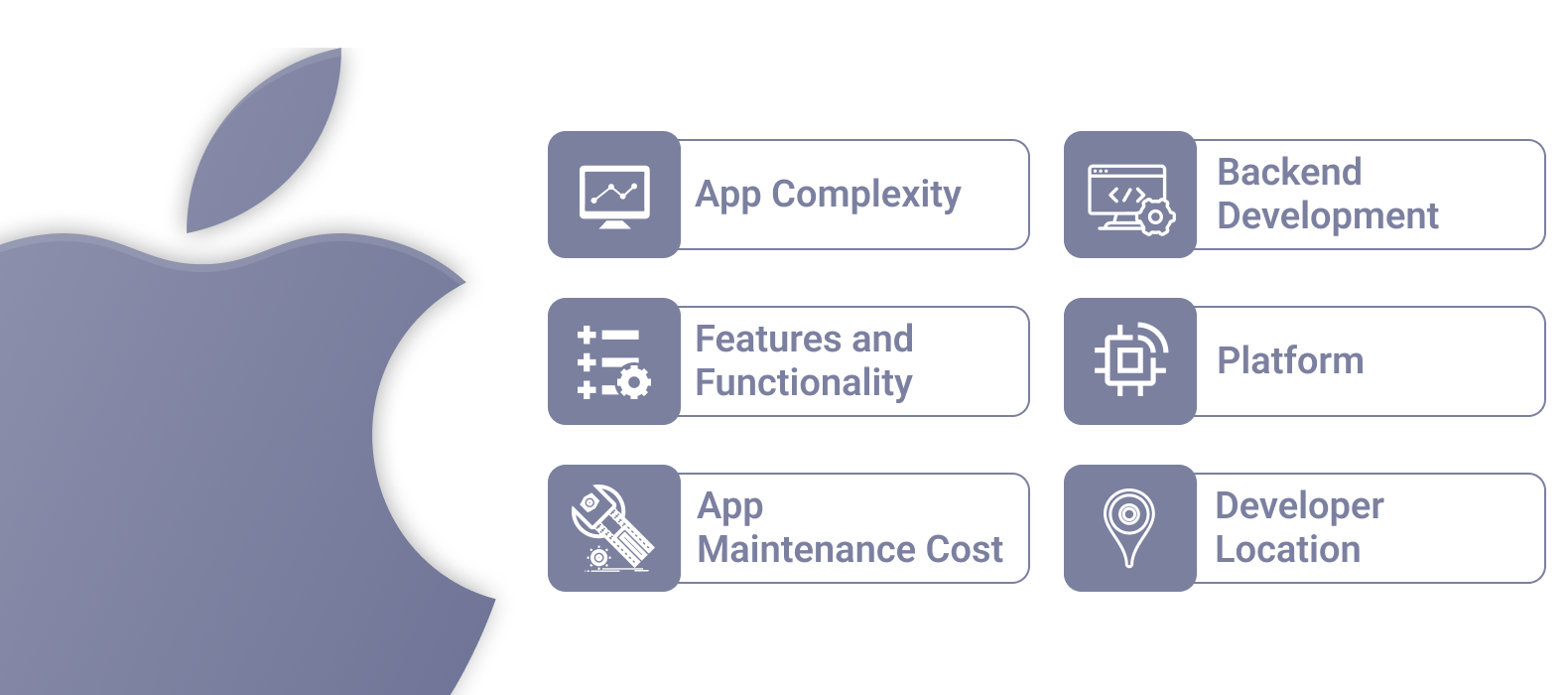
Certainly! Various factors can influence the cost to develop an iOS app. Here are some key factors that can affect the overall cost:
- App Complexity: The complexity of your app, including its functionality, features, and design, plays a significant role in determining the development cost. Apps with essential features and simple user interfaces will be less expensive to develop compared to complex apps with advanced functionalities and intricate designs.
- Features and Functionality: The number and complexity of features you want to incorporate into your app will impact the development cost. More features require additional development time and effort, increasing the overall cost.
- App Maintenance Cost: Developing an app is not a one-time investment. After the initial development, you need to consider ongoing app maintenance, bug fixes, updates, and support. Maintenance costs can vary depending on the size and complexity of the app, as well as the frequency of updates and approval required.
- Backend Development: If your app requires a server or backend infrastructure to handle data storage, user management, or complex operations, the cost will increase. Backend development involves building and maintaining server-side components and APIs, which requires additional time and resources.
- Platform: iOS app development typically requires specialized skills and tools like Xcode and Swift/Objective-C programming languages. Developing an app exclusively for iOS will have associated costs. However, if you choose to build for both iOS and Android simultaneously (cross-platform development), it can reduce the overall cost compared to developing separate native apps for each platform.
- Developer Location and Hourly Rates: The hourly rates of developers can vary significantly based on their location and level of expertise. Developers in regions with higher costs of living or in-demand markets might charge more than developers from other regions. Choosing a developer with the right skills and experience within your budget can help manage costs.
Defining your project requirements clearly and working closely with the development team to get accurate cost estimates is crucial. Consider obtaining quotes from multiple development companies or developers and compare their experience, portfolio, and reputation to make an informed decision that aligns with your budget and project goals.
iOS App Development Cost Estimation
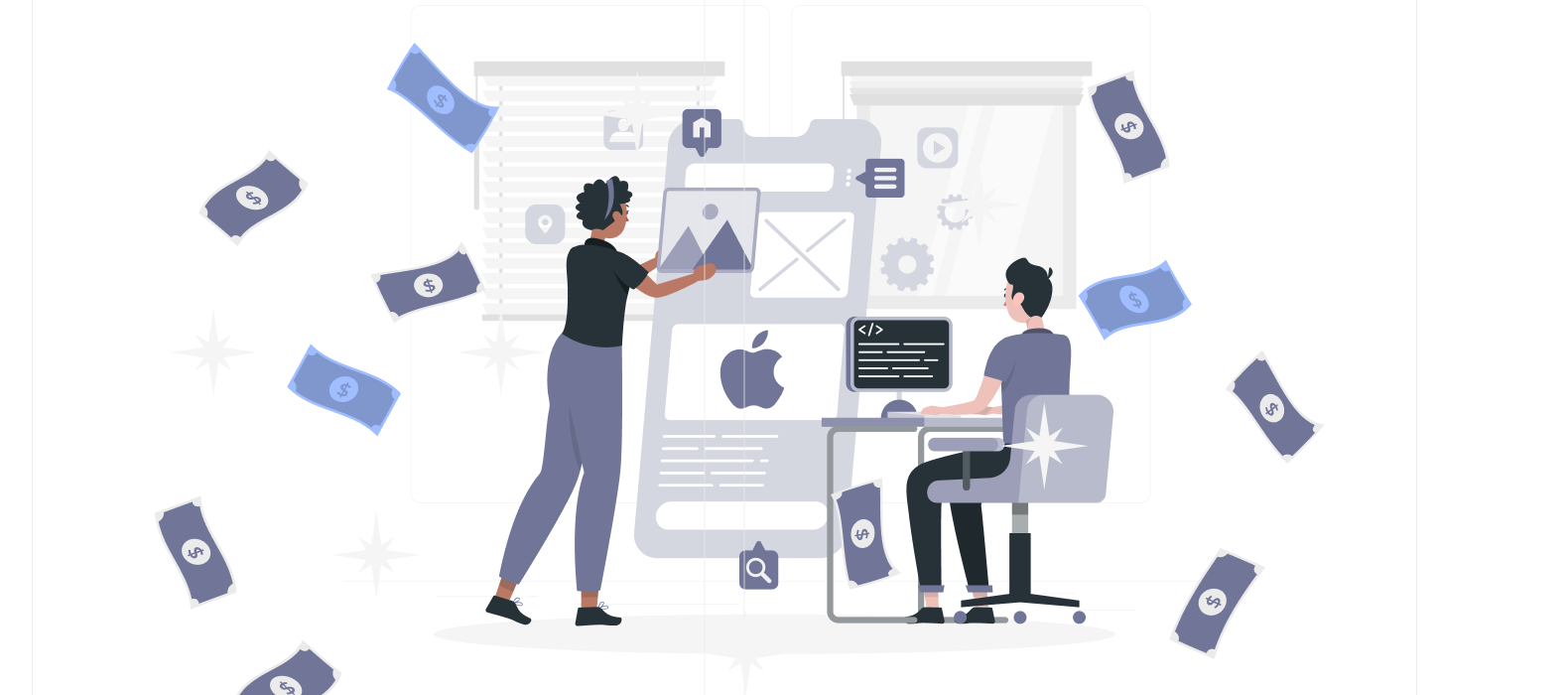
Developing a smartphone app typically costs around $25,000 to $150,000.
How much does it cost to develop an iOS app? Here, we outline the findings of our extensive research into and analysis of the IT market.
iOS App Development Cost based on Team Size
| Development Role | Avg. Development Cost (per hour) |
|
iOS app developer |
$20-$100 |
|
UI/UX designer |
$15- $50 |
|
Scrum master |
$50-$150 |
|
Project manager |
$12-$40 |
|
QA engineer |
$30-$70 |
|
Business analyst |
$60-$150 |
iOS App Development Cost based on App Size
| iOS App | Cost | Time Frame |
|
Basic App |
$2000 – $10,000 | 1-2 months |
|
Standard App |
$10,000 – $30,000 | 2-5 months |
|
Premium App |
$30,000+ | 6 months+ |
iOS App Development Cost based on Location
| Region | iOS App Development Cost |
|
India |
$20-40/hr |
|
United States |
$80-170/hr |
|
Australia |
$80-200/hr |
Comparison of Android and iOS App Development Cost
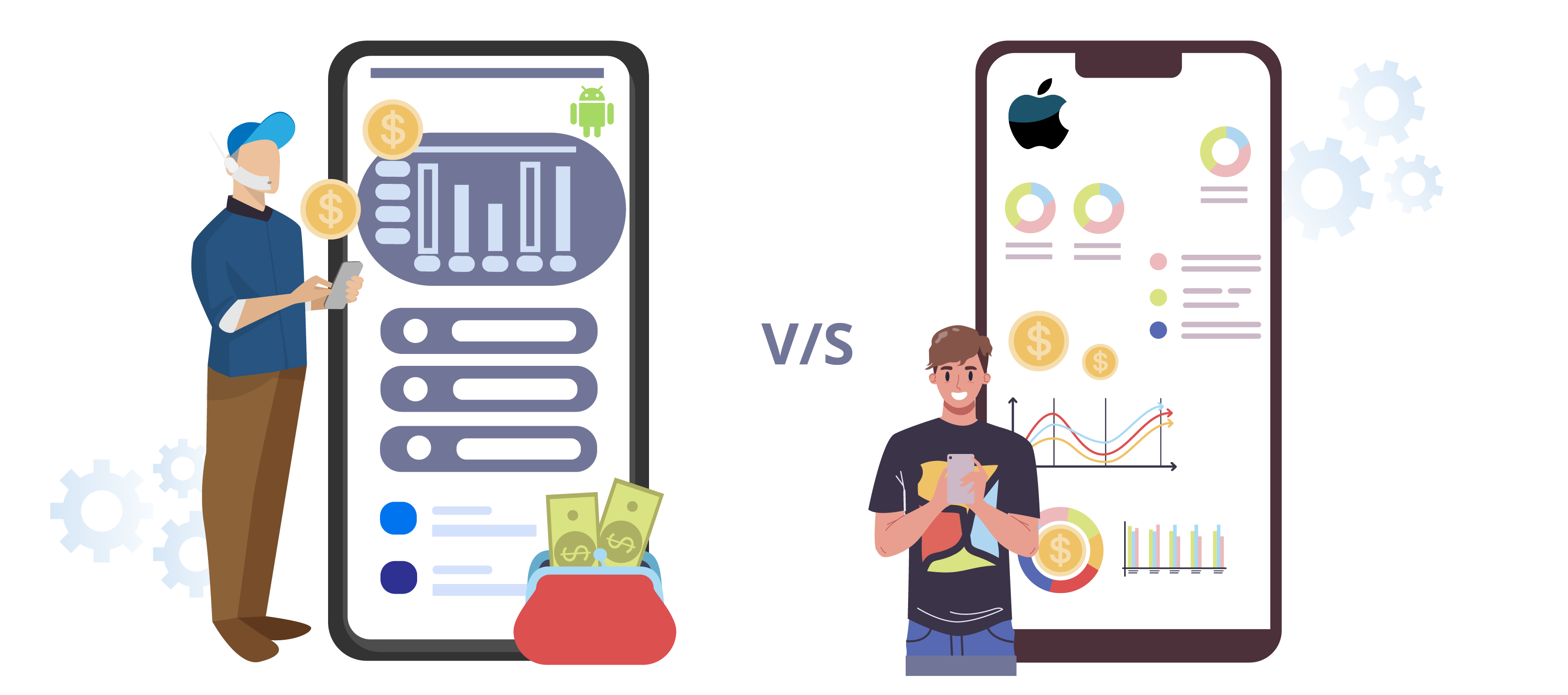
While you are concentrating on how much it will cost to develop an iOS app, it is also crucial to understand how much it will cost to create an Android app. This will help you know how your iOS or iPhone app differs from Android-based apps in cost.
There are two different mobile operating systems: iOS and Android. Many aspects of their apps are distinct from one another. Therefore, we must evaluate the costs of developing Android and iOS apps in terms of the following elements to understand the differences between them fully:
1. Design:
- Android: Android apps generally require more design variations due to the wide range of devices and screen sizes. This can increase the design cost.
- iOS: iOS apps have a more consistent design approach due to a limited number of devices and screen sizes, which can lead to relatively lower design costs.
2. App Development Time:
- Android: Developing an Android app may take longer due to variations in device specifications and the need for thorough testing on multiple devices.
- iOS: Developing an iOS app typically takes less time due to a narrower range of devices and screen sizes, resulting in a shorter development timeline.
3. Duration of Testing:
- Android: Testing an Android app can be more time-consuming due to the fragmentation in the Android ecosystem, requiring extensive testing on various devices and OS versions.
- iOS: Testing an iOS app is usually quicker as the ecosystem is more streamlined, with fewer device and OS variations.
4. App Development Hourly Rates:
- Android: The hourly rates for Android app development can vary based on the project’s complexity, location, and experience of the developers. Rates may range from $25 to $150 per hour or more.
- iOS: Similarly, iOS app development rates also depend on various factors. Depending on the project’s complexity and the developer’s expertise, they can range from $30 to $150 per hour or higher.
5. App Launch:
- Android: Publishing an Android app on the Google Play Store typically involves a one-time registration fee of $25. The approval process is relatively faster, allowing quick deployment.
- iOS: Launching an iOS app requires an annual membership in the Apple Developer Program, which costs $99 per year. The App Store review process can take longer, affecting the market time.
How Can Pairroxz Technologies Build a budget-friendly iOS App?
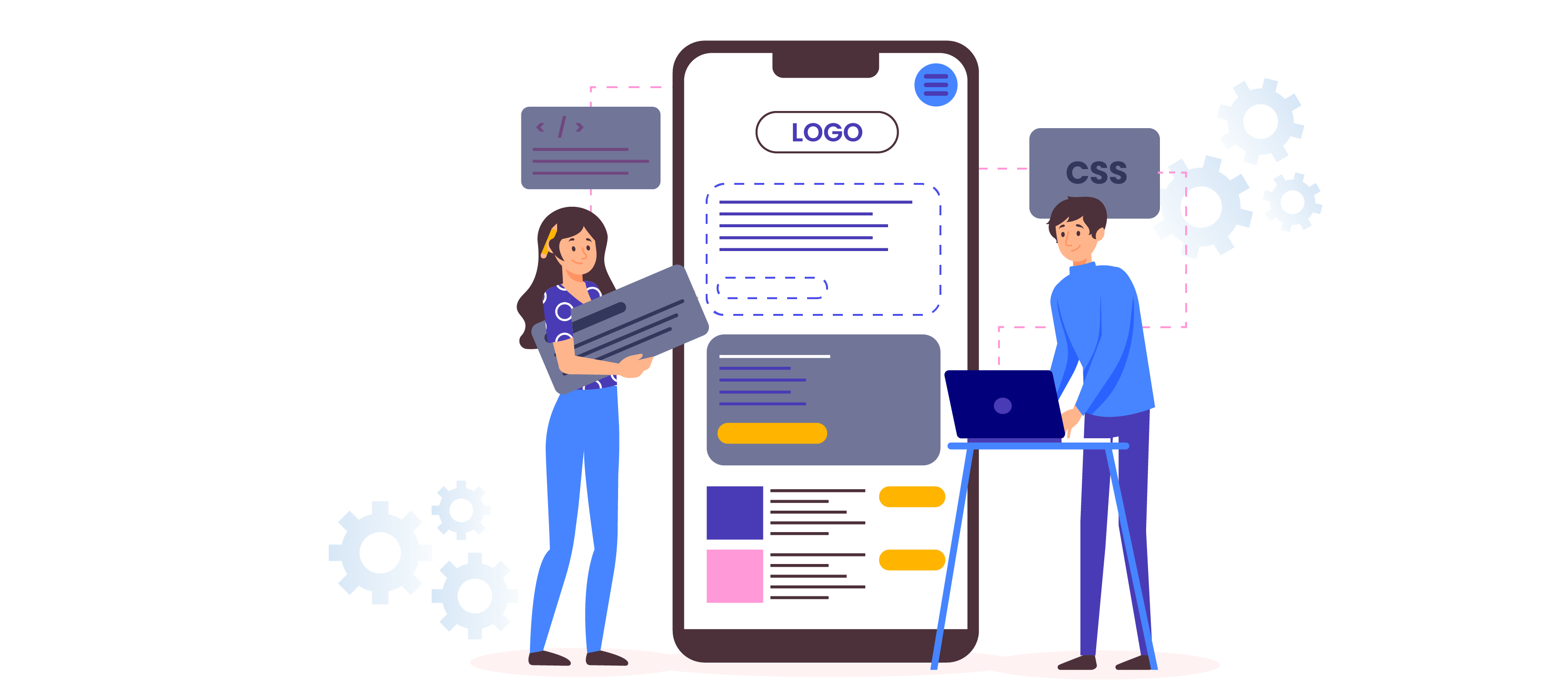
Pairroxz Technologies can build a budget-friendly iOS app by considering several key factors:
- They can streamline the app design to leverage the consistent iOS user interface, reducing design costs.
- They can optimize the development process using pre-built libraries and frameworks, saving time and resources.
- They can prioritize thorough testing to minimize post-launch issues.
- Pairroxz can leverage its expertise to find skilled iOS developers at competitive hourly rates, ensuring cost efficiency.
By following these steps Pairroxz Technologies can develop an iOS app that meets budget constraints without compromising quality.
FAQs
Question 1: How much does it cost to develop an iOS app?
The cost of developing an iOS app can vary significantly based on various factors such as the app’s complexity, features, design requirements, development approach, and location of the development team. On average, a simple iOS app can cost between $20,000 to $50,000, while complex or feature-rich apps can range from $50,000 to $150,000.
Question 2: What factors contribute to the cost of iOS app development?
Factors like app complexity influence the cost to develop an iOS app, UI/UX design, features and functionality, integration with backend systems, third-party API usage, development time, testing requirements, and the hourly rates of the development team. Additionally, factors such as app maintenance and updates should also be considered.
Question 3: Are there any ongoing costs associated with iOS app development?
Yes, there are ongoing costs to consider. These may include app maintenance, updates, bug fixes, hosting services, backend infrastructure costs (if applicable), and fees for Apple Developer Program membership ($99/year). It’s important to factor in these costs for the long-term sustainability and performance of the app.
Question 4: Should you outsource iOS app development to reduce costs?
Outsourcing iOS app development can be cost-effective, especially if you choose a reputable and experienced development team. Outsourcing can provide access to skilled resources at lower hourly rates, reduce infrastructure and overhead costs, and offer flexibility in scaling the team based on project requirements. However, conducting thorough research and due diligence is crucial before selecting an outsourcing partner.
Question 5: How can I get an accurate cost estimate for my iOS app development project?
To get an accurate cost estimate, it’s recommended to consult with professional iOS app development companies or freelance developers. Provide them with detailed project requirements, including features, design preferences, integration needs, and any specific considerations. Based on these details, they can provide a more precise cost estimate tailored to your project’s particular needs.

